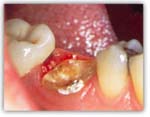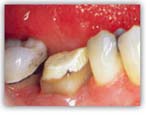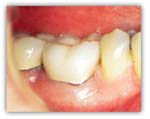Periodontal procedures are available to lay the groundwork for restorative and cosmetic dentistry and / or to improve the health and esthetics of your smile.
Crown lengthening is a surgical procedure that recontours the gum tissue and often the underlying bone surrounding one or more teeth so that an adequate amount of healthy tooth is exposed.
Crown lengthening is often used as part of a treatment plan for a tooth that is to be fitted with a crown.
This procedure provides the necessary space between the supporting bone and crown, preventing the new crown from damaging gum tissues and bone.
Your dentist or Dr. Crump may also recommend crown lengthening in order to make a restorative procedure possible. If a tooth is badly worn, decayed or fractured below the gum line, crown lengthening adjusts the gum and bone levels to gain access tom ore of the tooth so it can be restored.
What are the benefits of this procedure?
Functional crown lengthening is an important part of an integral effort to optimize your health, appearance, comfort and function. A beautiful new smile and improved periodontal health are your keys to smiling, eating and speaking with comfort and confidence.



